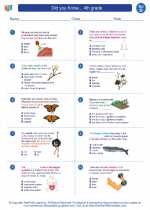Characteristics of Reptiles
- Vertebrates: Reptiles have a backbone, which is a defining characteristic of vertebrates.
- Dry, scaly skin: Unlike amphibians, reptiles have dry, scaly skin that helps prevent water loss.
- Cold-blooded: Reptiles are ectothermic, meaning they rely on external sources of heat to regulate their body temperature.
- Amniotic eggs: Most reptiles lay eggs with a protective, semi-permeable shell, allowing them to reproduce on land.
- Lung breathing: Reptiles breathe air using lungs, distinguishing them from amphibians, which can also respire through their skin.
- Mostly carnivorous: Many reptiles are carnivorous, feeding on a diet of insects, small mammals, birds, and other reptiles.
Types of Reptiles
There are several major groups of reptiles, including:
- Lizards: Lizards are a diverse group of reptiles with over 6,000 species. They are known for their elongated bodies and tails, four legs, and movable eyelids.
- Snakes: Snakes are limbless reptiles that have evolved from lizards. They use their highly flexible bodies and specialized jaws to capture and consume prey.
- Turtles: Turtles are characterized by their protective shells that encase their bodies. They are adapted for both land and water habitats.
- Crocodilians: This group includes crocodiles, alligators, caimans, and gharials. They are large, aquatic reptiles with powerful jaws and a semi-aquatic lifestyle.
- Tuataras: Tuataras are a rare group of reptiles found only in New Zealand. They have unique characteristics and are considered living fossils.
Importance of Reptiles
Reptiles play important ecological roles as predators, prey, and seed dispersers. They contribute to the balance of ecosystems and are often revered in various cultures and traditions.
Conservation
Many reptile species are threatened by habitat loss, poaching, and climate change. Conservation efforts are crucial to protect these animals and maintain biodiversity.
[Reptiles] Related Worksheets and Study Guides:
.◂Science Worksheets and Study Guides Fourth Grade. Did you Know... 4th grade
Study Guide Did you Know... 4th grade
Did you Know... 4th grade  Worksheet/Answer key
Worksheet/Answer key Did you Know... 4th grade
Did you Know... 4th grade  Worksheet/Answer key
Worksheet/Answer key Did you Know... 4th grade
Did you Know... 4th grade  Worksheet/Answer key
Worksheet/Answer key Did you Know... 4th grade
Did you Know... 4th grade 

 Worksheet/Answer key
Worksheet/Answer key
 Worksheet/Answer key
Worksheet/Answer key
 Worksheet/Answer key
Worksheet/Answer key

The resources above cover the following skills:
Core Ideas for Knowing Science
Life Science
Organisms are organized on a cellular basis and have a finite life span.